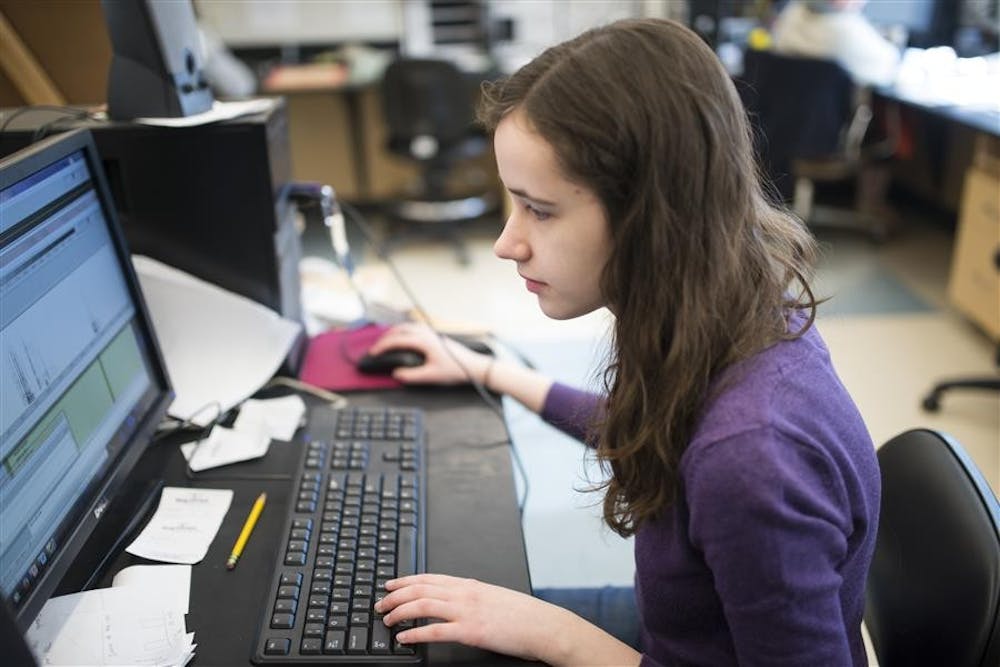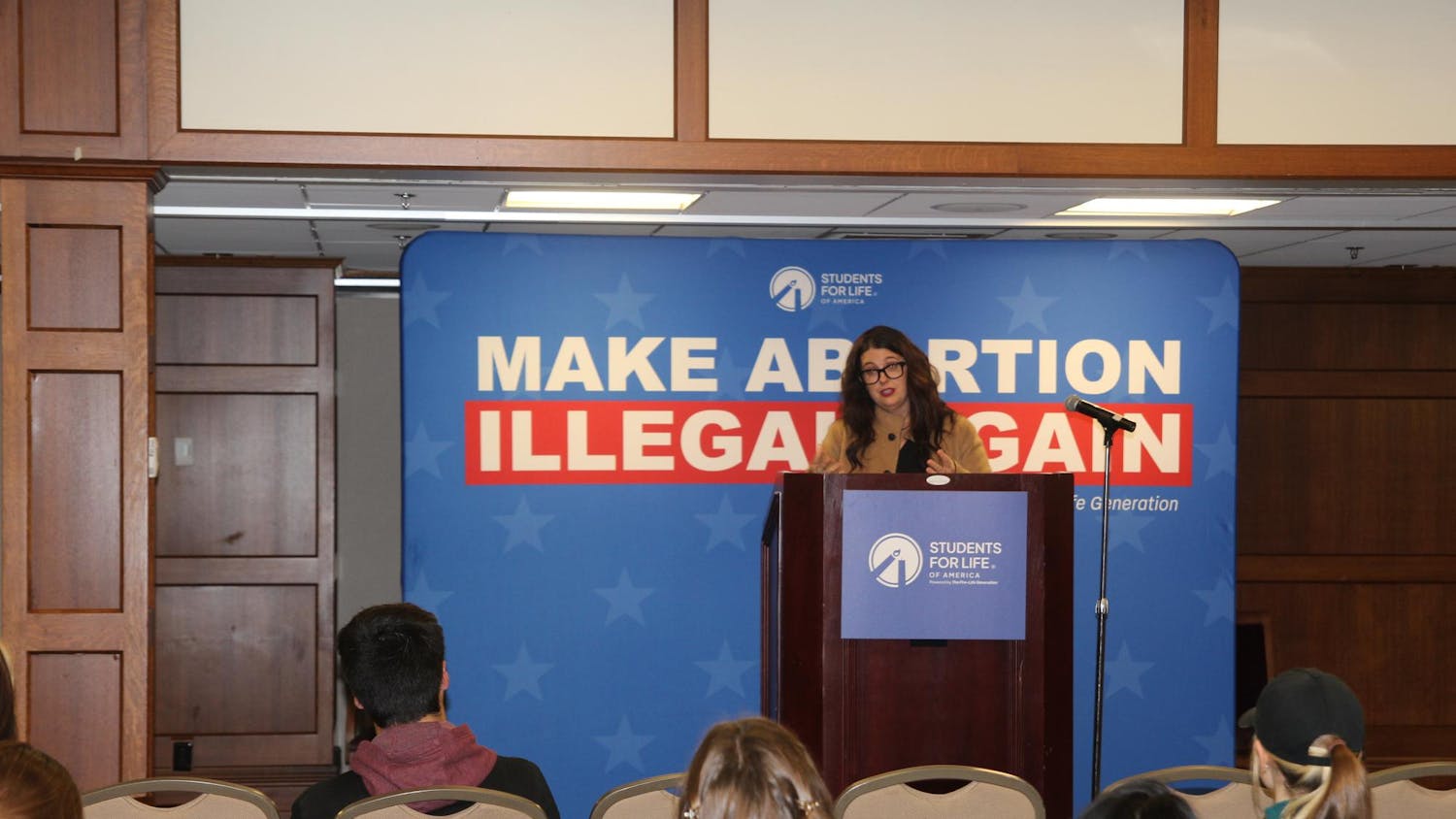Caitlyn Finton spends a minimum of 10 hours a week working in a lab researching a particular aspect of mouse communication that, as far as she knows, no one has looked at before.
When she’s running an experiment, she spends up to three hours daily running and monitoring interactions between male and female mice.
When she has all of her data in place, she spends this time in front of a computer screen, analyzing what she’s found.
She is hoping to find context-based variations in mouse squeaks that could indicate that mice squeak to convey information.
“There really is no typical day in science, in my experience,” she said.
Finton, a sophomore majoring in biology, is part of the Science Technology and Research Scholars program at IU, which pairs students with a professor to begin researching in a lab during the fall of their freshman year.
“It sounds really cliché, but for me, research is all about solving a mystery and figuring out how to look at the world in a new way,” she said.
Finton works in Jordan Hall in the Hurley Lab, operated by Laura Hurley, associate professor of biology.
Hurley said at any given time, there are usually two to three undergraduates working in her lab.
She said while undergraduates typically begin working on easier tasks, they have the opportunity to create their own projects, which is what Finton has done.
“If they show aptitude and they’re really excited about something, then they can go on to do their own project,” Hurley said.
Finton is currently working on her own research project after three semesters in the lab.
Graduate student and mentor Sarah Keesom, a Ph.D. candidate in biology, trained Finton when she began at the lab.
“Initially I just had her start off by helping me with some of my dissertation work,” Keesom said.
It was through this work that Finton first learned how to use software to analyze mouse vocalizations, which she’s using for her personal research today.
Keesom knew her mentee was ready for her own project when Finton’s confidence and independence began to grow, Keesom said.
Keesom said she has enjoyed watching Finton mature as a person and as a scientist.
“She’s a very enthusiastic, very intelligent and very driven student,” Keesom said.
Keesom said she wants to be a professor upon receiving her Ph.D. and has always loved to teach, which is why she takes advantage of opportunities to mentor students like Finton.
She said undergraduate research helps show students how much they can do in the sciences, and that research is not an unattainable goal.
“Getting that experience shows you that scientists are real people, too,” she said.
Hurley said working with undergraduates helps her to look at her work afresh, from the eyes of someone who has significantly less experience.
“What I really like is the chance to be able to put yourself in the mindset of a student just starting out again,” she said.
Sarita Soni, vice provost for research at IU, said undergraduate research creates a kind of pipeline for the University by getting students excited about research.
“If you don’t get undergraduates excited, then you won’t have graduate students,” she said.
Soni said research can help undergraduate students develop critical thinking skills they can take with them into the world regardless of whether they pursue a career in research.
“I think all students are asking questions and there are always ways of asking questions to get answers and I think research helps you to define those questions a little better,” she said.
Finton said she was excited about her current project.
“As far as we know, no one has looked at nonlinearity in mouse squeaks,” she said. “It’s exciting to be potentially the first person looking at something.”
Once she graduates from IU, Finton said she plans on going to graduate school for biology.
“After that, I’m not quite sure,” she said. “I’m still trying to decide if I want to go into academia or the private sector. Either way, I know that I want to do research.”
Student studies mouse communication

Get stories like this in your inbox
Subscribe



